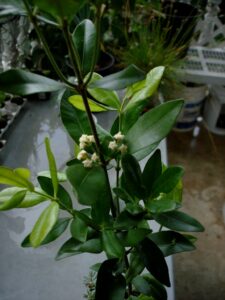Ali`ipoe



Due to its mythological importance, Maile ist often used for special occasions and ceremonial functions and is a very meaningful adornment for the hula dancer.
The Ali`ipoe finally, is a flowering plant which is non-endemic to Hawai`i. „Canna Indica“ is a decorative garden plant with yellow, orange or red blossoms. What makes this plant interesting to hula dancers are its seeds, which are used as the „noise maker“ in `Uli`uli rattles.
In additions to that, the seeds can be strung into beautiful, ever-lasting lei..
Like any artful piece of hawaiian poetry, „Ali`ipoe“ is rich in koana, or hidden meaning.
„Kuʻu ipo hoʻoheno o ke aumoe“, for example, the cherished sweatheart of the midnight hour, is certainly someone, with whom you don’t just, hm let’s say – play tennis.














